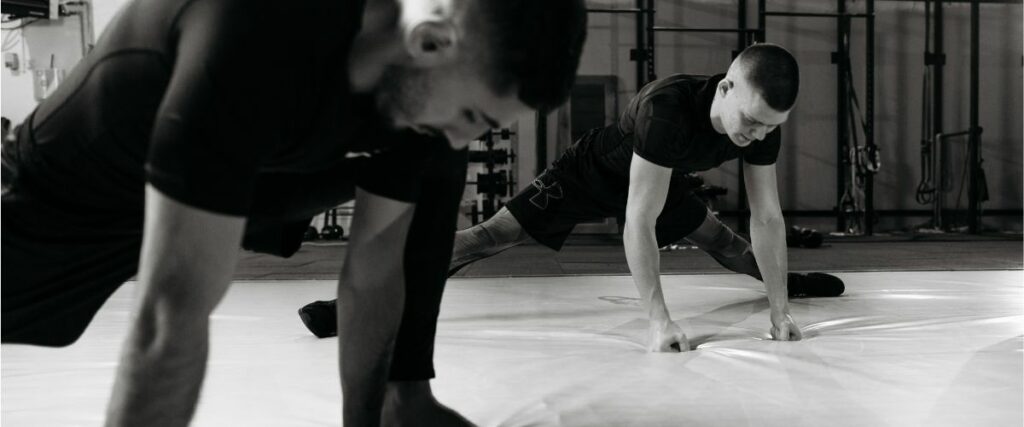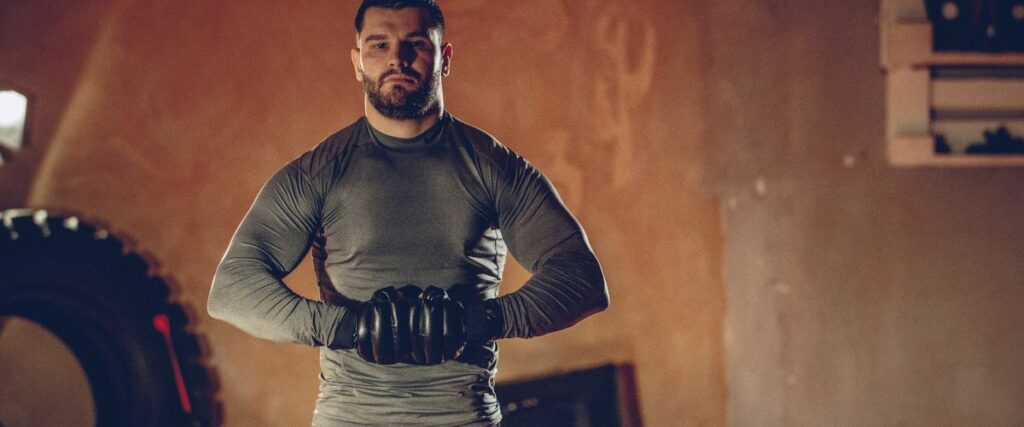MMA fighters are strong, fast, and mobile. Their bodies undergo rigorous training and vicious battles, and preparing for them is an integral part of the training. But what is the most effective way of building power for MMA?
MMA fighters lift weights as a part of their strength development. There are various types of strength that fighters must have, and depending on whether they are in a fight camp, they prioritize different types of weight training.
Strength and conditioning training is an essential element of MMA training but can also be detrimental if done incorrectly. Let’s see why and how MMA fighters must lift weights for optimal results in the cage.
Why MMA Fighters Need To Lift Weights
MMA fighters must be strong, fast, powerful, and well-conditioned to answer all the demands of striking, grappling, and wrestling. Pure sports training is not nearly sufficient for building all those qualities, and for that reason, MMA fighters need to lift weights.
Lifting heavy weights is usually connected with maximal strength, or how much you can lift. This strength is necessary for fighters, especially in grappling, and it can only be effectively built through focused weight training.
But this is not the only type of strength a fighter needs to exercise in a fight. Reactive and explosive strength is what you use to react to and throw fast and powerful strikes and perform takedowns and similar explosive movements.
There is also elastic and dynamic strength used in fighting. Martial arts-specific training improves strength, some types more than others. Still, more is needed to provide the levels required not only for high levels of competition but for any competition. The only way to have power in all directions is through specific strength training.
There are more benefits to lifting weights for fighters. A strong and elastic musculature can handle much higher training loads. Strength training also builds structural balance and stability in the muscles and significantly reduces the chance of injury.
Also, let’s remember that different types of weight training can also be utilized for conditioning and endurance, which are incredibly crucial in MMA.
A common misconception in traditional martial arts is that weight training will necessarily make you rigid and slow. But MMA has been the proving ground not only for effective fighting techniques but for strength and conditioning training as well.
The improvements in knowledge and methodology have made their way even to styles like Muay Thai and Karate, where weights have been taboo for decades.
How Often Do MMA Fighters Strength Train

MMA fighters usually do 2 or 3 lifting sessions per week. Still, strength training must always be in accordance with the entire training regimen, most notably with skills training. A significant factor that determines how much and how often a fighter trains is the period in relation to his fight.
Fighters reduce strength training while drastically increasing technical training and sparring during a fight camp, which lasts 6 to 8 weeks before a competition. The closer the fight is, the more emphasis there is on stamina and power generation.
The extra fatigue from weight training will be detrimental to the overall fight performance. While in fight camp, usually, two strength sessions per week are enough.
Conversely, the time out of fight camp is the best time to improve on deficient aspects of strength, for example, maximal or reactive strength. If you want to increase maximal strength and body mass, then utilize heavy weight lifting.
With three sessions per week, or even more in cases where the athlete wants to go up a weight class, they can improve without jeopardizing the fight performance.
Do MMA Fighters Train Like Bodybuilders?

A common mistake was that fighters either trained like bodybuilders or didn’t incorporate resistance training. Resistance training needed for MMA strength also changes the body and how it looks, so it has a bodybuilding element to it.
In fact, many people would prefer to have the “fighter’s body.”. But bodybuilding-specific training and sports training do not go well together.
Bodybuilding focuses on specific muscle groups, exhausting them completely, and then avoids using those same muscles the next day. This training style has minimal carryover to MMA. It fatigues the body to the point where the more important skill training is impeded.
Instead, MMA fighters should lift weights using exercises that resemble the moves they will do in the octagon and target the types of strength they require.
Do MMA Fighters Lift Weights Or Do Calisthenics?
MMA fighters use a combination of weight training and calisthenics. There are some very powerful and valuable bodyweight exercises like pushups and pullups that you can use in various ways towards different strength goals. They are present in every fighter’s regimen.
Bodyweight exercises are often used for plyometrics (explosive movements in short intervals).
However, calisthenics alone is not enough to improve maximal strength to the degree that weights can. You should use both training methods in a comprehensive training program for the best results.
What Is The Best Weight Lifting Program for MMA Fighters?

Building a good weightlifting program for MMA is where things get more complicated. As I’ve pointed out multiple times, you must address different types of strength through training and do this in a way that interferes the least with fight training.
With the amount of information available and the variety of workout regimens, building your own routine that is also effective is a daunting task. This is why all professional fighters have dedicated strength and conditioning coaches.
Strength training is usually performed 2 times per week or 3 times if the fighter doesn’t have competition any time soon. Further away from a fight, you may prioritize improving maximal strength through heavy lifts with low volume and speed.
Here you use more well-known powerlifting exercises like the bench press, squat, and deadlift. Maximal strength is important in grappling to overcome difficult positions and pushing and pulling the opponent.
Explosive and reactive strength play an even bigger role in fighting, both for striking and wrestling. This is why many fighters do different exercises than bodybuilders and powerlifters.
Medicine balls, throws, and twists all translate very well to MMA. Jumps and other explosive movements like plyometric pushups and lunges are regular parts of the routine when speed and velocity are the main focus.
Olympic lifts like the snatch, clean, and jerk are a mainstay in fighters’ strength training. They have immense carryover and develop insane strength. Still, the downside is that they require good technique and more time to develop skills. Otherwise, the chance of injury is serious.
Summary
Strength training is mandatory for every MMA fighter, and lifting weights is the best way to improve strength. Compound movements and explosive exercises have the best carryover to MMA and are by far the most used by fighters.
Avoiding the iron will hold your physical development back, but misusing it can also be harmful. Be sure to utilize lifting the proper way and watch yourself grow, regardless if you are a competitor or training for recreation.
